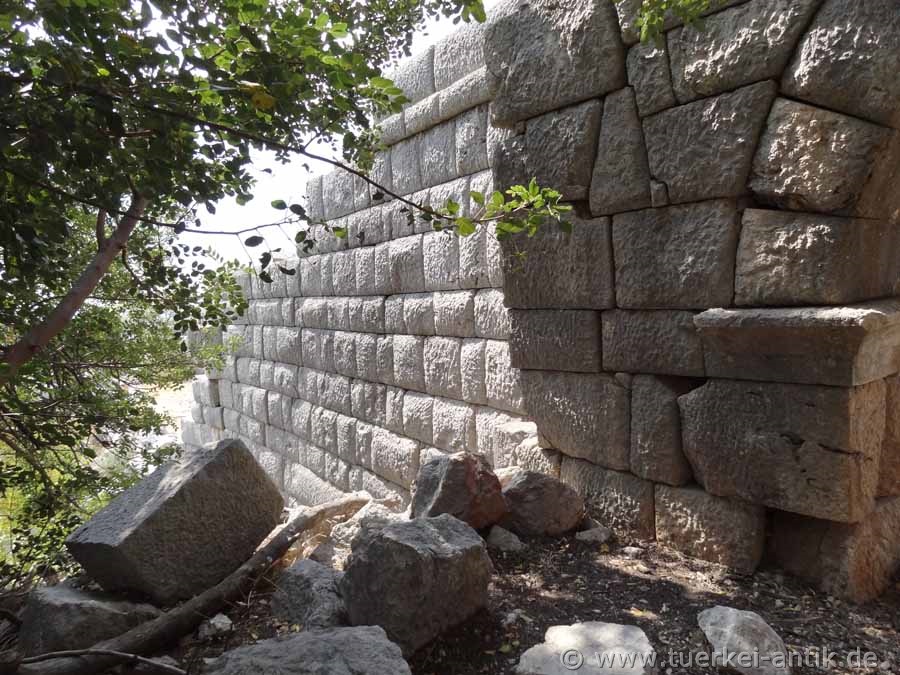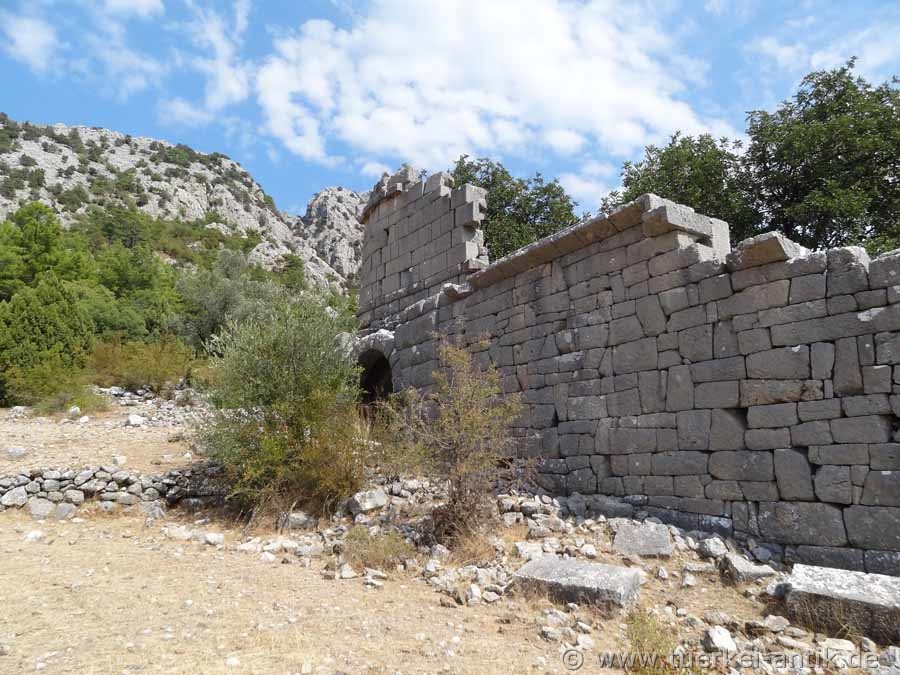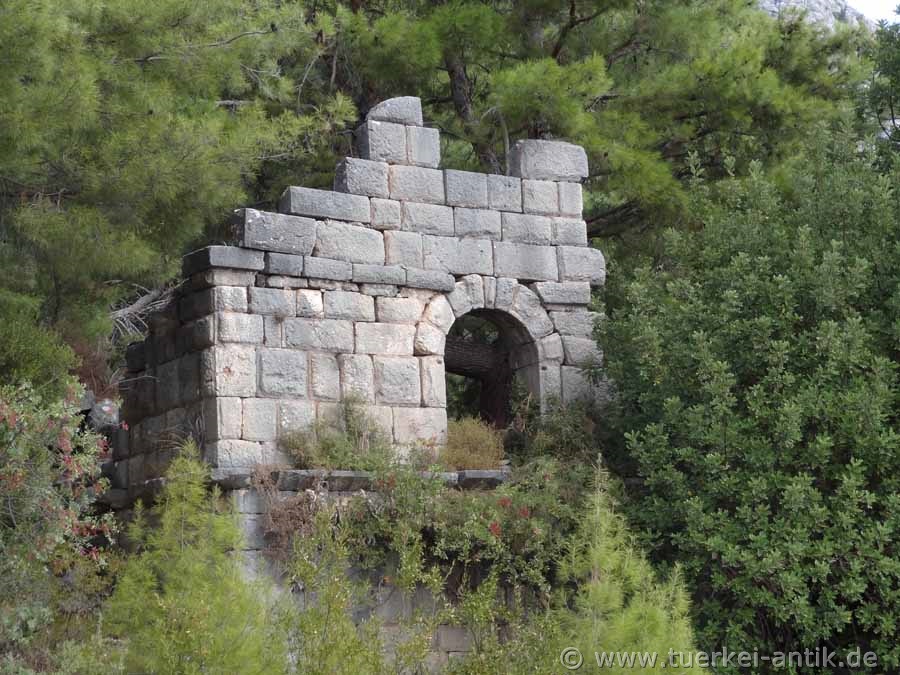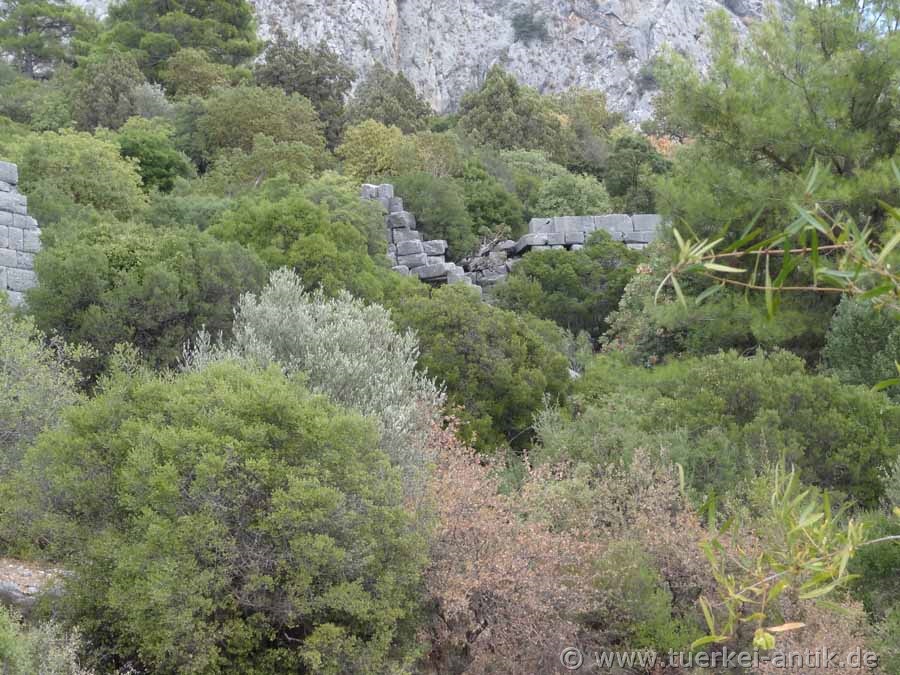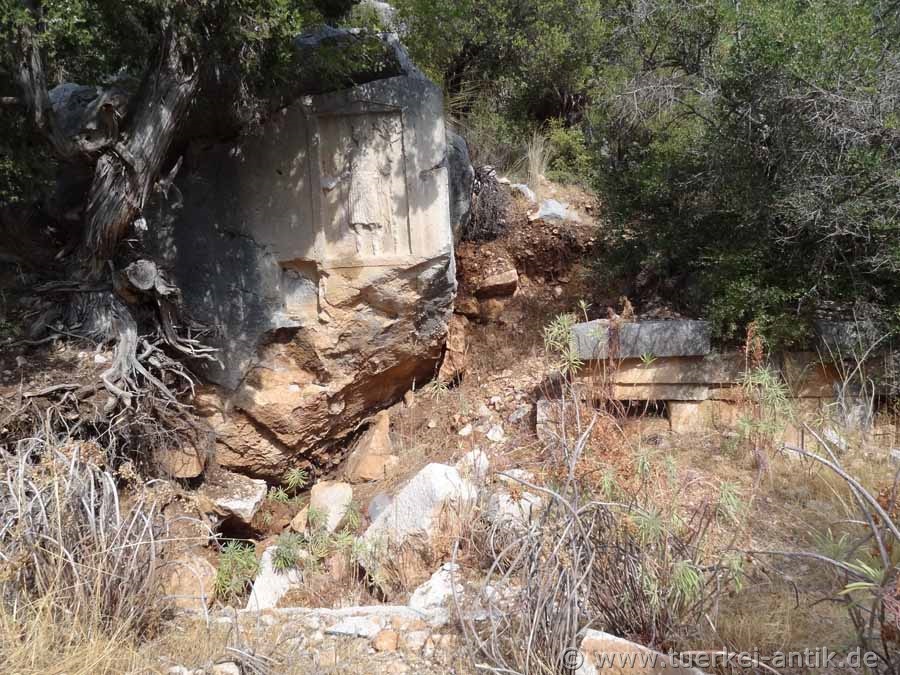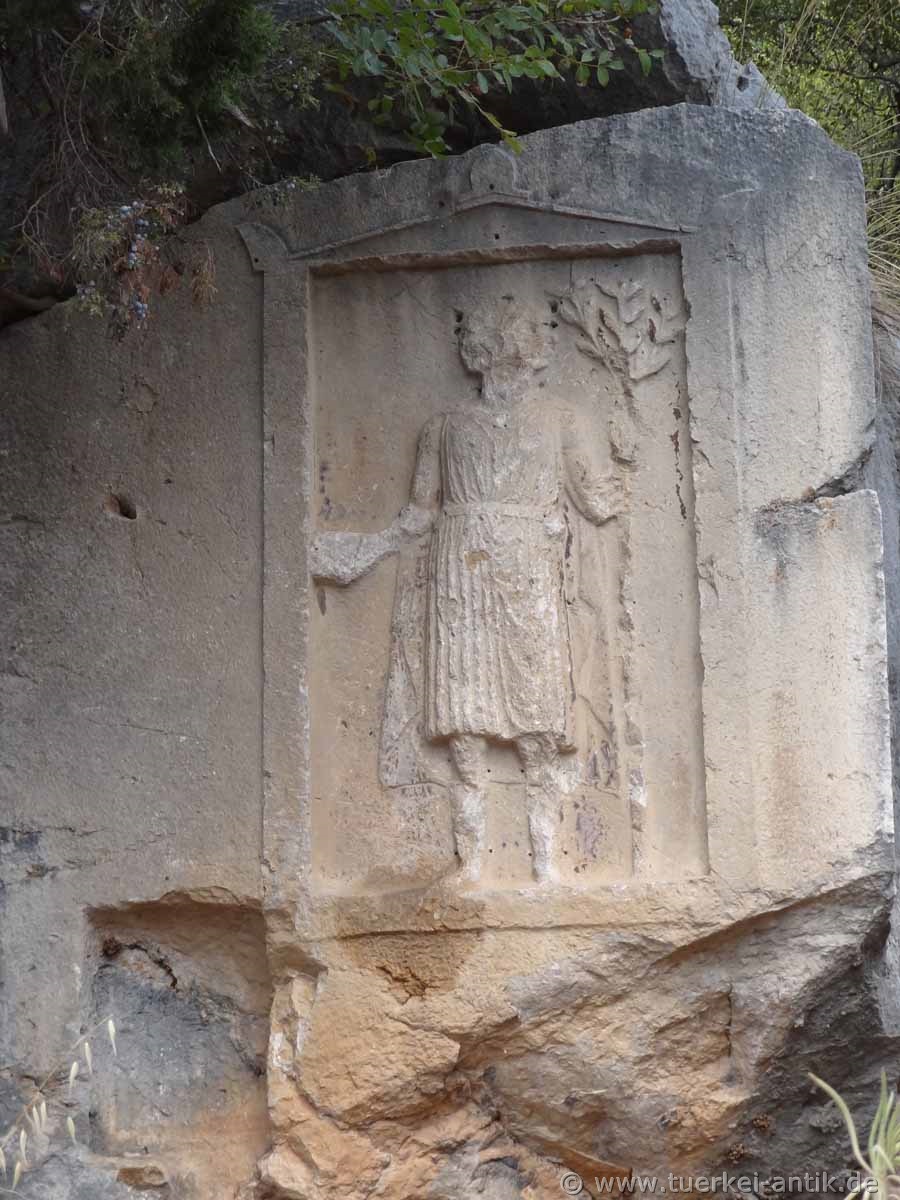 |
| Pednelissos | |||
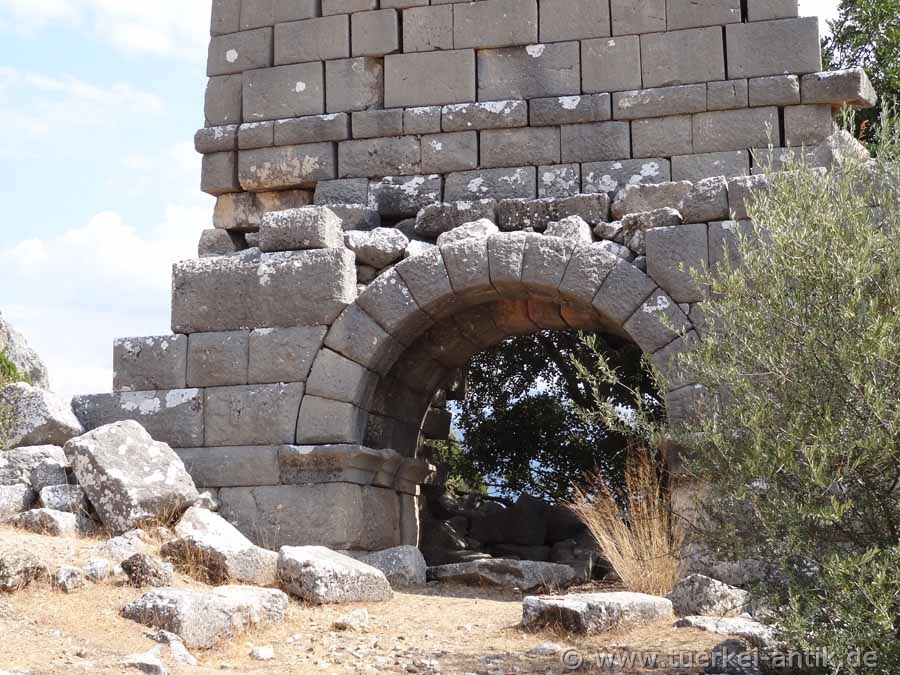 |
|
||
| Western city gate with remains of the gate tower | |||
|
Pednelissos was an ancient Pisidian town in the mountains, 42 km as the crow flies north of Antalya, near the present village of Kozan. According to the latest findings, the city was founded as early as the 3rd century B.C. and probably completely abandoned in the 7th century A.D. |
|||
|
|
|||
| Remains of the western city wall at the city gate | |||
|
The most important historical tradition about Pednelissos is the report of Polybios (ancient Greek historian) about the war between Pednelissos and Selge in 218 BC, in which Pednelissos called Achaeos, the governor of Side, to his aid. |
|||
|
|
|||
| Western city wall | |||
|
Besides large parts of the Hellenistic city wall with defensive gate towers, extensive architectural remains, mainly from the Roman imperial period, have been preserved. Among them the Agora with Stoa and an early Christian basilica in the northeastern corner, probably already built in Hellenistic times on an artificial terrace and later secured with an elaborate supporting structure. Findings suggest that the basilica was built on a Hellenistic bouleuterion. None of the inscriptions found during excavations prove the name of the city, however, this is now regarded as secured. |
|||
|
|
|||
| The ruins of the baths | |||
|
From 188 B.C. Pisidia, and thus also the city of Pednelissos, belonged to the kingdom of Pergamon and fell to Galatia in 39 B.C.. In 25 BC Pisidia finally became part of the Roman province of Galatia. In Byzantine times, the city was a bishop's residence. The diocese continues to exist as the titular bishopric of Petnelissus of the Roman Catholic Church. |
|||
|
|
|||
| The former city area, today completely overgrown | |||
|
The former city area is now heavily overgrown, making a visit quite difficult. Only the western lower town in the area of the city gate is easier to walk on. But even the visit to the baths near the gate is difficult. |
|||
|
|
|||
|
|
|||
|
Apollo sanctuary from the 4th century BC Chr. |
|||
|
|
|||
|
Within the former city area, architectural remains of thermal baths, a temple and other churches have been preserved. Outside the city walls were two necropolises and an Apollo sanctuary dating from the 4th century BC. Coins from the 2nd and 3rd centuries A.D. were found during the excavations between 2001 and 2004. |
|||
|
You reach Pednelissos coming from Antalya via the coastal road D 400, eleven kilometres after the exit to the airport a road branches off to Gebiz (brown signposted to Sillyon). After 21 km you have reached Gebiz. In Gebiz always keep left. After about four kilometres you reach the riverbed of the Aksu, which is wide and overloaded with boulders, which you cross one kilometre further on the bridge. The road now leads up a hill through a small village, at the end of which the road branches off to the right at an acute angle. The road passes impressive rock formations, about 15 km through the river valley of Aksu. After approx. 15 km, immediately after crossing a stream ford, keep left. A white signpost points the way to Haspınar and Kozan. Cross the village Haspınar and follow the road around Bodrum-Kaya, on the south-eastern flank of which the town of Pednelissos was once built at an altitude of about 650 metres. Follow the signs for Kozan. About 2 km after the last turn-off (to the left) you have reached the village of Kozan. 200 meters after the mosque, a path branches off to the left. Until shortly after the last property the way is still passable with a normal car. The following, approx. 1.5 km long section uphill can only be driven safely with an all-terrain vehicle, despite possibly contrary statements of the locals. |
|||
| Photos: @chim | |||
| Translation aid: www.DeepL.com/Translator | |||
| Source: Wikipedia and others | |||
|
|
|||

